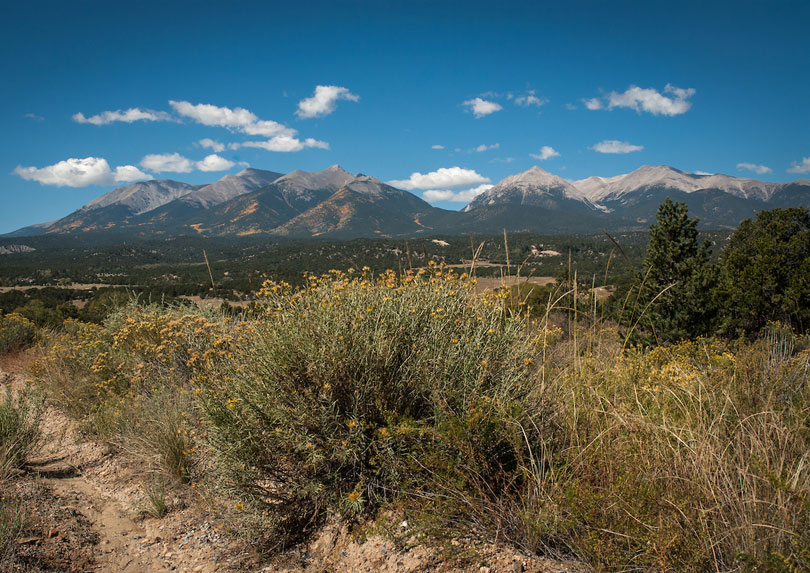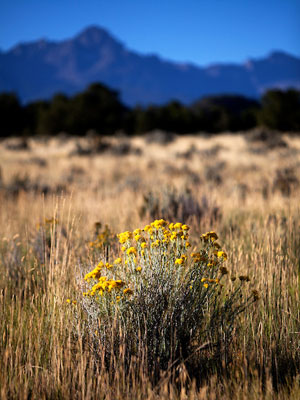
What Is It?
Shrubland, also called scrub, bushland or thicket, generally sees more rainfall than grassland or desert but less than forest. Short trees, or shrubs, constitute shrubland, and the habitat type often occurs on ridges and cliffs.
What Are Some Examples?
Sandsage - Sandsage shrublands dominate sandy areas on Colorado’s eastern plains, where they often intermingle with shortgrass prairie to form a locally patchy sandsage-shortgrass matrix. Sandsage is characterized by sand sagebrush (Artemisia filifolia) with an understory of tall, mid- and short grasses and scattered forbs.
Saltbrush - Saltbush includes salt desert scrub, mat saltbush shrublands, and shale badlands.

Sagebrush - Sagebrush in Colorado includes the three subspecies of big sagebrush (basin big sagebrush, Artemisia tridentata ssp. tridentata; mountain big sagebrush, A. tridentata ssp. vaseyana; and Wyoming big sagebrush, A. tridentata ssp. wyomingensis) that in Colorado’s 2015 State Wildlife Action Plan occur as shrublands and montane sagebrush steppe. These shrublands occur throughout much of the western United States.
Desert shrub- These semi-arid shrubby grasslands, sometimes referred to as shrub steppes, are found between 7,500 and 9,500 feet in elevation, on windswept mesas, valley floors, gentle slopes, and on shoulders of ridges. Colorado’s shrub-steppes are grass-dominated areas with an open shrub layer.
Learn more about these and other shrubland habitats in
chapter 3 of the 2015 SWAP.
What Species Depend On This Habitat?
Mammals such as kit fox and multiple species of prairie dogs rely primarily on the shrubland habitat type. It also supports birds like the lesser prairie chicken, Gunnison sage-grouse, Greater sage-grouse, burrowing owl, Columbian sharp-tailed grouse, and golden eagle.
What Challenges Does This Landscape Face, and What Is CPW Doing?
A few major threats to shrubland habitats are fragmentation due to roads and trails, invasive species, agriculture and livestock, and oil and gas. CPW strives to mitigate the effects of these threats through efforts such as habitat restoration, the
Invasive Species Program, implementation of compatible grazing practices, and best management practices.

